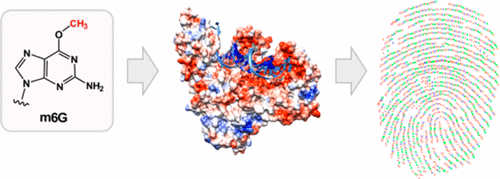当前位置:
X-MOL 学术
›
J. Am. Chem. Soc.
›
论文详情
Our official English website, www.x-mol.net, welcomes your
feedback! (Note: you will need to create a separate account there.)
Fingerprints of Modified RNA Bases from Deep Sequencing Profiles
Journal of the American Chemical Society ( IF 14.4 ) Pub Date : 2017-11-17 00:00:00 , DOI: 10.1021/jacs.7b07914 Anna M. Kietrys 1 , Willem A. Velema 1 , Eric T. Kool 1
Journal of the American Chemical Society ( IF 14.4 ) Pub Date : 2017-11-17 00:00:00 , DOI: 10.1021/jacs.7b07914 Anna M. Kietrys 1 , Willem A. Velema 1 , Eric T. Kool 1
Affiliation

|
Posttranscriptional modifications of RNA bases are not only found in many noncoding RNAs but have also recently been identified in coding (messenger) RNAs as well. They require complex and laborious methods to locate, and many still lack methods for localized detection. Here we test the ability of next-generation sequencing (NGS) to detect and distinguish between ten modified bases in synthetic RNAs. We compare ultradeep sequencing patterns of modified bases, including miscoding, insertions and deletions (indels), and truncations, to unmodified bases in the same contexts. The data show widely varied responses to modification, ranging from no response, to high levels of mutations, insertions, deletions, and truncations. The patterns are distinct for several of the modifications, and suggest the future use of ultradeep sequencing as a fingerprinting strategy for locating and identifying modifications in cellular RNAs.
中文翻译:

深度测序谱中修饰的RNA碱基的指纹
RNA碱基的转录后修饰不仅在许多非编码RNA中发现,而且最近也在编码(信使)RNA中被发现。他们需要复杂而费力的方法来定位,而且许多方法仍然缺乏用于局部检测的方法。在这里,我们测试了下一代测序(NGS)检测和区分合成RNA中十个修饰碱基的能力。我们在相同的上下文中将修饰碱基的超深度测序模式与未修饰碱基进行了比较,包括错误编码,插入和缺失(indels)以及截短。数据显示对修饰的反应范围很广,从无反应到高水平的突变,插入,缺失和截短。对于某些修改,模式是不同的,
更新日期:2017-11-19
中文翻译:

深度测序谱中修饰的RNA碱基的指纹
RNA碱基的转录后修饰不仅在许多非编码RNA中发现,而且最近也在编码(信使)RNA中被发现。他们需要复杂而费力的方法来定位,而且许多方法仍然缺乏用于局部检测的方法。在这里,我们测试了下一代测序(NGS)检测和区分合成RNA中十个修饰碱基的能力。我们在相同的上下文中将修饰碱基的超深度测序模式与未修饰碱基进行了比较,包括错误编码,插入和缺失(indels)以及截短。数据显示对修饰的反应范围很广,从无反应到高水平的突变,插入,缺失和截短。对于某些修改,模式是不同的,











































 京公网安备 11010802027423号
京公网安备 11010802027423号